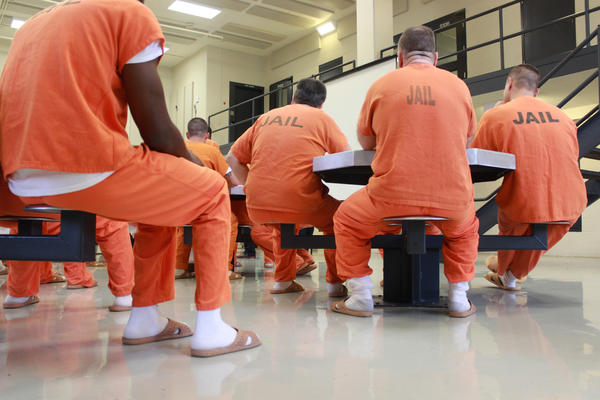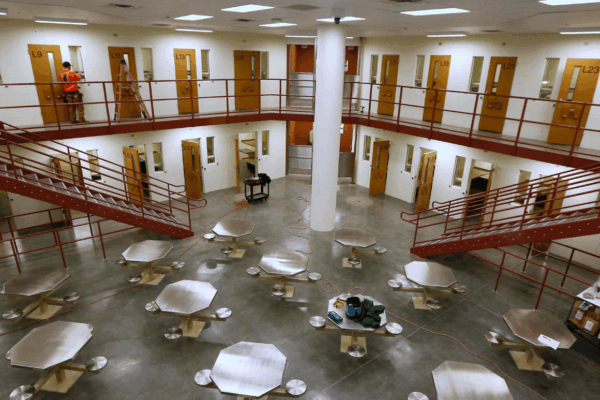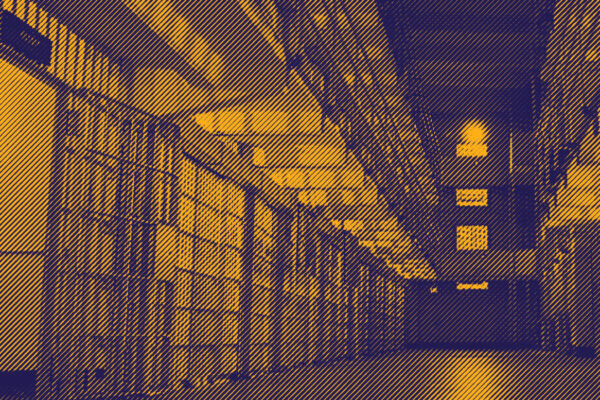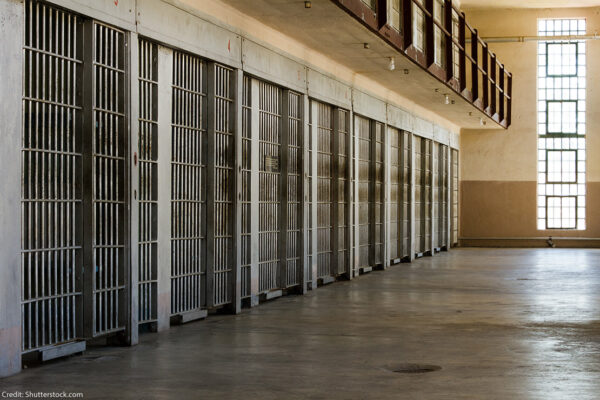All across Texas, the novel coronavirus is revealing, or at least reminding us, of how broken our state’s criminal legal system is.
With one of the highest incarceration rates on earth, Texas’ prisons, jails, and detention centers have become petri dishes, facilitating the spread of illness by packing people like sardines in a can, unable to physically distance. That’s why the World Health Organization and the Centers for Disease Control and Prevention identified correctional facilities as particularly vulnerable environments for a deadly COVID-19 outbreak.
Early in this public health emergency, the ACLU of Texas, public health experts, and other organizations across Texas sounded the alarm about the viral risks inside corrections facilities. We urged sheriffs, judges, prosecutors, and police chiefs to act swiftly to prevent illness and death among people in custody, correctional staff, and the general public — primarily through reducing unnecessary arrests and incarcerating fewer people. We also filed two lawsuits to protect the most vulnerable people in our criminal legal system.
Since we made our recommendations, the pandemic has exploded in Texas jails and prisons. By April 15, nine county jails had confirmed cases of COVID-19. In Texas prisons, 421 prisoners and staff tested positive across 24 facilities. These confirmed cases likely undercount the actual number: testing availability is limited and many people are still awaiting test results.
But across Texas, officials in many counties have begun to take steps to slow the spread of COVID-19 and protect vulnerable populations by reducing incarceration. The research we have conducted shows some meaningful results:
- In Bexar County, the jail population decreased by more than 12% between March 1 and March 19, 2020, from 4,212 to 3,694. The county judge, district attorney and sheriff requested in a letter that the City of San Antonio Police Department minimize arrests by using a tool called cite and release, where officers issue tickets with court dates instead of taking people to jail for minor offenses like marijuana possession. In addition, the sheriff fast-tracked the release of some incarcerated people accused of non-violent misdemeanors.
- In Brazoria County, the jail population decreased by more than 17% between March 1 and April 8, from 853 to 704. There, judges rescheduled many court appearances, and many of the justice courts extended appearance dates for minor offenses.
- In Collin County, the jail population decreased by nearly 24% between March 1 and April 8, from 1,067 to 811. The sheriff asked local officials and police chiefs to use their judgment before arresting people for Class C misdemeanors and non-violent crimes and to use cite and release more. Some courts suspended warrants for things like missing court dates and Class C misdemeanors, adopted a variety of procedures to allow for social distancing.
- In Dallas County, the jail population decreased by more than 14% between March 1 and April 8, from 5,879 to 5,047. The sheriff has urged police agencies to avoid arrests for low-level offenses such as marijuana possession, criminal mischief, graffiti and theft.
- In Harris County, the jail population decreased by nearly 18% between March 1 and April 15, 2020, from 9,050 to 7,432. Criminal district court judges have signed a “general order bond” which orders the release of certain people accused of low-level, nonviolent felony offenses while they await trial. In addition, the sheriff is seeking compassionate release of many people in the jail.
- In Hidalgo County, the jail population decreased by more than 23% between March 1 and April 8, 2020, from 1,047 to 805. Local judges have been increasing release from jail by reducing the role of money in decisions about whether people should be released.
- In Tarrant County, the jail population decreased by nearly 14% between March 1 and March 25, from 4,102 to 3,552. The Fort Worth Police Department announced that they are giving out tickets, rather than arresting people, for more low-level crimes.
- In Travis County, the jail population decreased by nearly 30% between March 1 and April 15, from 2,218 to 1,581. The sheriff asked police to avoid arrests for minor offenses, and the top misdemeanor prosecutors suspended prosecution of minor nonviolent offenses. Judges suspended warrants for most misdemeanors and some felonies and adopted new policies intended to allow people to wait for their court dates at home instead of in a jail cell.
While these are important steps, they are not enough. Urgent action is still needed to further reduce the number of people in Texas jails and prisons to protect public health and lives. Public health experts have been calling for the same thing for months.
We’ve known and advocated for a long time that local criminal justice officials have the tools to address the injustices that mass incarceration perpetuates. The conversion of correctional facilities into viral hotspots is simply bringing new urgency to questions about depriving people of their liberty by locking them in a cell, especially pretrial while they are presumed innocent but can’t afford cash bail for their freedom.
Our ultimate hope is that, when we get beyond this scary moment, the people with the power to continue changing our criminal justice system will prioritize reducing our state’s dependence on mass incarceration for good.






